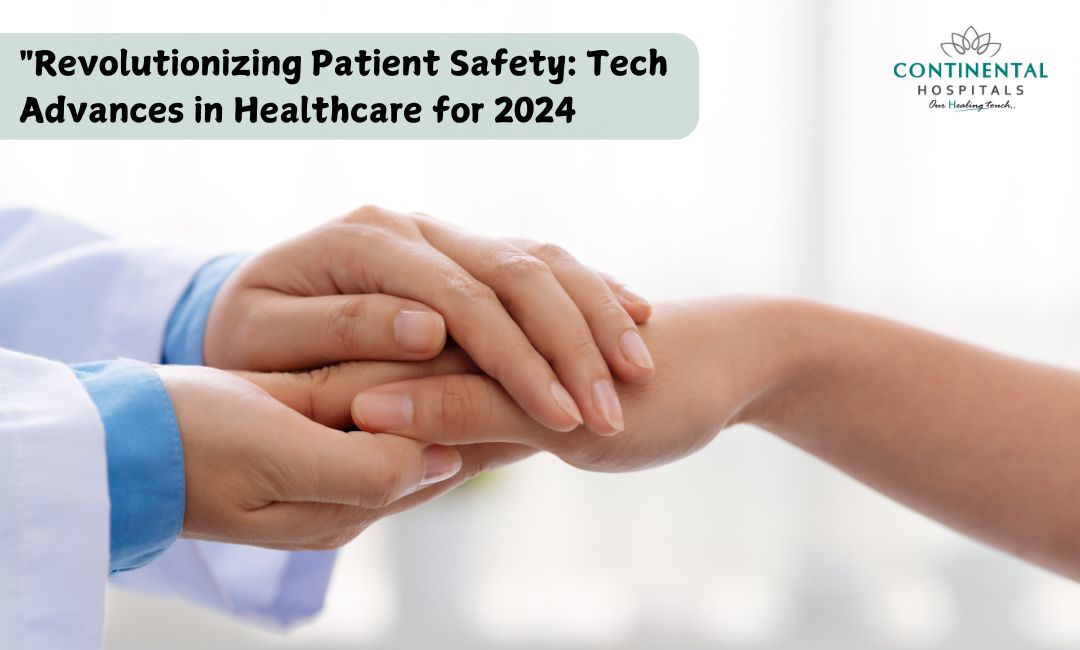In recent years, technology has increasingly become a cornerstone in healthcare, transforming how patient safety is managed and improved. As we move through 2024, advancements in technology are paving the way for revolutionary changes in how we approach patient safety. From innovative monitoring systems to cutting-edge AI solutions, the future of healthcare is here, and it's making patient safety a top priority.
The Rise of Digital Health Technologies
The integration of digital technologies into healthcare has been a game-changer. In 2024, digital health technologies are more advanced than ever, offering a range of tools designed to enhance patient safety and improve outcomes. Key innovations include electronic health records (EHRs), wearable health monitors, and telemedicine platforms.
Electronic Health Records (EHRs): EHRs have become standard in many healthcare settings, streamlining patient information and making it easily accessible to healthcare providers. This system reduces the risk of errors due to miscommunication and provides a comprehensive view of a patient’s medical history. According to a 2024 report by the World Health Organization (WHO), EHRs have been shown to reduce medical errors by up to 30%, significantly improving patient safety.
Wearable Health Monitors: Wearables like smartwatches and fitness trackers are now equipped with advanced sensors that monitor vital signs such as heart rate, blood pressure, and blood glucose levels. In India, wearable technology is gaining popularity, with the market expected to grow by 25% in 2024 alone. These devices provide real-time data that can alert both patients and healthcare providers to potential issues before they become critical, enhancing proactive care and early intervention.
🥗 Healthy Plate Challenge
🍽 Add Your Favorite Dish
Pick Your 6 favorite foods, eat, and see the results.Drag & drop foods onto your plate.
Drop Food Here
Telemedicine: The rise of telemedicine has made healthcare more accessible, especially in remote areas. In India, the telemedicine market is projected to reach $5.4 billion by the end of 2024, driven by increased adoption of digital health solutions. Telemedicine platforms enable remote consultations, allowing patients to receive care without the need to travel. This not only improves access to healthcare but also reduces the risk of exposure to infections in crowded waiting rooms.
Artificial Intelligence and Machine Learning
Artificial Intelligence (AI) and Machine Learning (ML) are at the forefront of healthcare innovation, offering new ways to enhance patient safety. AI algorithms can analyze vast amounts of data to identify patterns and predict potential health issues.
Predictive Analytics: AI-powered predictive analytics are revolutionizing patient safety by identifying patients at risk of developing complications before they occur. For instance, AI systems can analyze patient data to predict the likelihood of readmission or identify early signs of deteriorating health. According to a 2024 study published in The Lancet, AI-driven predictive models have reduced hospital readmission rates by 20% in several countries.
AI in Diagnostics: AI is also transforming diagnostic accuracy. Advanced algorithms can analyze medical images with greater precision, reducing the chances of misdiagnosis. In India, where diagnostic errors have been a concern, AI is being integrated into radiology practices to enhance accuracy and speed. A 2024 survey conducted by the Indian Radiological and Imaging Association (IRIA) reported a 15% improvement in diagnostic accuracy with the use of AI tools.
Enhanced Patient Monitoring and Safety Systems
Patient monitoring systems have evolved significantly, incorporating advanced technology to provide continuous oversight of patient health.
Smart Beds and Sensors: Modern hospital beds are equipped with sensors that monitor patients’ movements and vital signs. These smart beds can alert healthcare staff to any sudden changes in a patient’s condition, such as a fall or abnormal vital signs. In Indian hospitals, smart bed technology is being adopted to enhance patient safety and reduce the incidence of falls, a common concern in healthcare settings.
Real-Time Data Sharing: The ability to share real-time data between healthcare providers has improved coordination and response times. In 2024, many hospitals use integrated systems that allow for seamless communication between different departments. This real-time data sharing ensures that critical information is available when needed, reducing the risk of errors and improving patient outcomes.
The Impact on Patient Safety
These technological advancements are transforming patient safety in several ways:
Improved Accuracy: AI and robotics enhance diagnostic accuracy and surgical precision, reducing the likelihood of errors.
Increased Accessibility: Telemedicine and wearables make healthcare more accessible, particularly for those in remote or underserved areas.
Enhanced Data Security: Blockchain technology ensures that patient data is secure and accurately managed.
Proactive Care: Wearables and AI enable proactive management of health conditions, preventing emergencies and improving patient outcomes.
Challenges and the Path Forward
Despite the advancements, there are still challenges to address. Ensuring the security and privacy of patient data remains a critical concern. Additionally, the digital divide can limit access to these technologies in underserved regions, particularly in developing countries.
To overcome these challenges, ongoing efforts are needed to improve data security measures, provide training for healthcare providers, and expand access to technology in underserved areas. Collaborative efforts between governments, healthcare organizations, and technology providers will be essential in addressing these issues and ensuring that the benefits of technological advancements in healthcare are accessible to all.
Conclusion
As we embrace 2024, technology continues to drive significant improvements in patient safety. Innovations such as AI, telemedicine, wearables, blockchain, and robotics are reshaping the healthcare landscape, making it safer and more efficient. In India, these advancements are not only enhancing the quality of care but also expanding access to healthcare services for millions. However, it is crucial to address challenges related to data security and accessibility to fully realize the potential of these technologies.
.webp)














